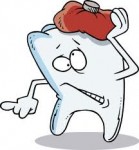Widgetized Section
Go to Admin » Appearance » Widgets » and move Gabfire Widget: Social into that MastheadOverlay zone
Curing the National Toothache: Elements of a National Dental Plan
 Since the 1798 establishment of federally-sponsored hospitals for those in the maritime trades, strides have been taken toward the overall improvement of public health. Passage of the Affordable Care Act (ACA) in 2010 more or less brings us up to the present. While we have come a long way toward meeting our public health, safety and well-being obligations at all levels, considerable distance remains to be traveled. Recognized by many as a significant achievement and an advance, a number of critics, including Rep. John Conyers, Jr. (D-MI), simultaneously regard the ACA as an inadequate and unfulfilled commitment to access, affordability and comprehensive health care coverage.
Since the 1798 establishment of federally-sponsored hospitals for those in the maritime trades, strides have been taken toward the overall improvement of public health. Passage of the Affordable Care Act (ACA) in 2010 more or less brings us up to the present. While we have come a long way toward meeting our public health, safety and well-being obligations at all levels, considerable distance remains to be traveled. Recognized by many as a significant achievement and an advance, a number of critics, including Rep. John Conyers, Jr. (D-MI), simultaneously regard the ACA as an inadequate and unfulfilled commitment to access, affordability and comprehensive health care coverage.
A major case in point concerns overall oral health. Whereas market failure and incomplete governmental response have left many uncovered or inadequately covered, by health care provision, the situation is much worse with specific regard to oral health. According to health reporter Jason Breslow, “more than 49 million people live in areas where it is difficult to access care.”
As is often the case, certain groups suffer disproportionately, including the institutionalized, those in substandard nursing homes, the young, the elderly,some members of the rural population, Native Americans, Hispanics, African-Americans and the low-income, including low-income veterans.
Medicare does not provide dental coverage, which is obviously a problem for seniors, especially for those attempting to survive on Social Security benefits alone, or retirees on fixed incomes.
While Medicaid does provide for the indigent elderly, the low-income under 21, the disabled, and pregnant women, in terms of dental care that coverage is limited in a number of respects and has been in decline. Dentists may refuse Medicaid patients.
States are not required by federal regulations to provide dental services under Medicaid, and some do not. Because it is optional, when economically squeezed, dental care is often among the first services cut by states. Emergency care is provided by 13 states.
As with those lacking access to health care generally, hospital emergency rooms have become a safety net of last resort, although they are ill-suited and ill-equipped to provide dental services. A recent Bellingham Herald article reported that in an 18-month period 54,000 people were seen for dental reasons in Washington’s emergency rooms at a cost to the taxpayers of more than $36 million.
It’s not just the low- or fixed-income or the disadvantaged who may suffer from a lack of access to dental care. According to a report by U.S. Senator Bernard Sanders (I-VT), up to 130 million Americans are not covered by dental insurance (2012). For many middle-income wage earners and career professionals, a key issue is affordability. Not all employers offer any sort of dental care as part of their benefits package. For those employers that do, frequently the employee rather than the employer pays all or most of the premiums.
These premiums, when compared with health care, may be prohibitively expensive. For routine check-ups and minor procedures, such as the filling of cavities, it may be less costly for employees to pay out of pocket rather than to pay steep premiums. Even those covered by dental insurance often find co-pays and deductibles that are expensive, and higher as a percentage of total treatment cost than found under conventional health care plans.
What might be done to better address these needs? A goal of bringing the entirety of the population under dental coverage must be set forth and implemented.
A good starting point would be to extend the Affordable Care Act to cover dental services. Employers would be required to “play or pay.” If they do not provide dental insurance coverage approved under the plan, they would be required to pay an ascertained amount into a fund that extends coverage to the uninsured. Co-pays and deductibles would be eliminated under this approach.
At present, there are about 1,100 community centers around the country that provide various forms of health care, but only between 600 and 700 of them provide dental care. This network would be expanded, insuring every county has at least one center that provides dental care, with larger, urban counties having multiple. An adjunct of the Public Health Service should be created, to bring dental care to un-served and underserved populations. The CDC has an infrastructure grant program that presently provides expanded dental health services for 20 states. This would be expanded and extended.
Due to the shortage of dentists, more persons need to be encouraged to enter the profession. Laws that prohibit “midlevel” or para-dental professionals from providing services must be amended or repealed. Data gathering and monitoring needs to be enhanced. Emphasis on preventive measures, such as water fluoridation and tooth sealants for children would be reinforced, such as under the CDC program.
Formulation of a comprehensive national dental plan would be another stride toward the provision of national health and well-being that began well over two hundred years ago.
____________________________________________________________________
Author: Jay D. Jurie, Ph.D. is an associate professor in the School of Public Administration at the University of Central Florida in Orlando, FL.
Image courtesy of http://www.bubblews.com/news/103381-how-to-cure-toothache.


 (1 votes, average: 4.00 out of 5)
(1 votes, average: 4.00 out of 5)
Follow Us!